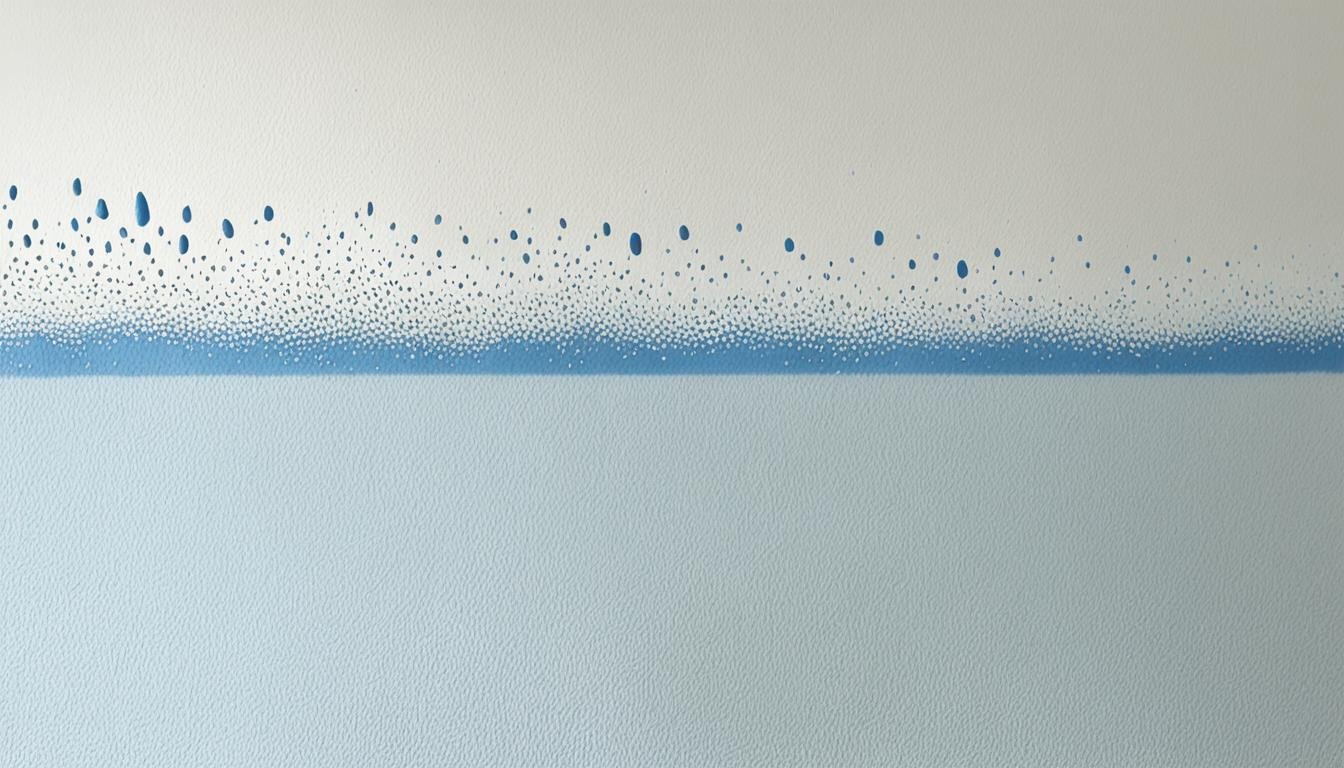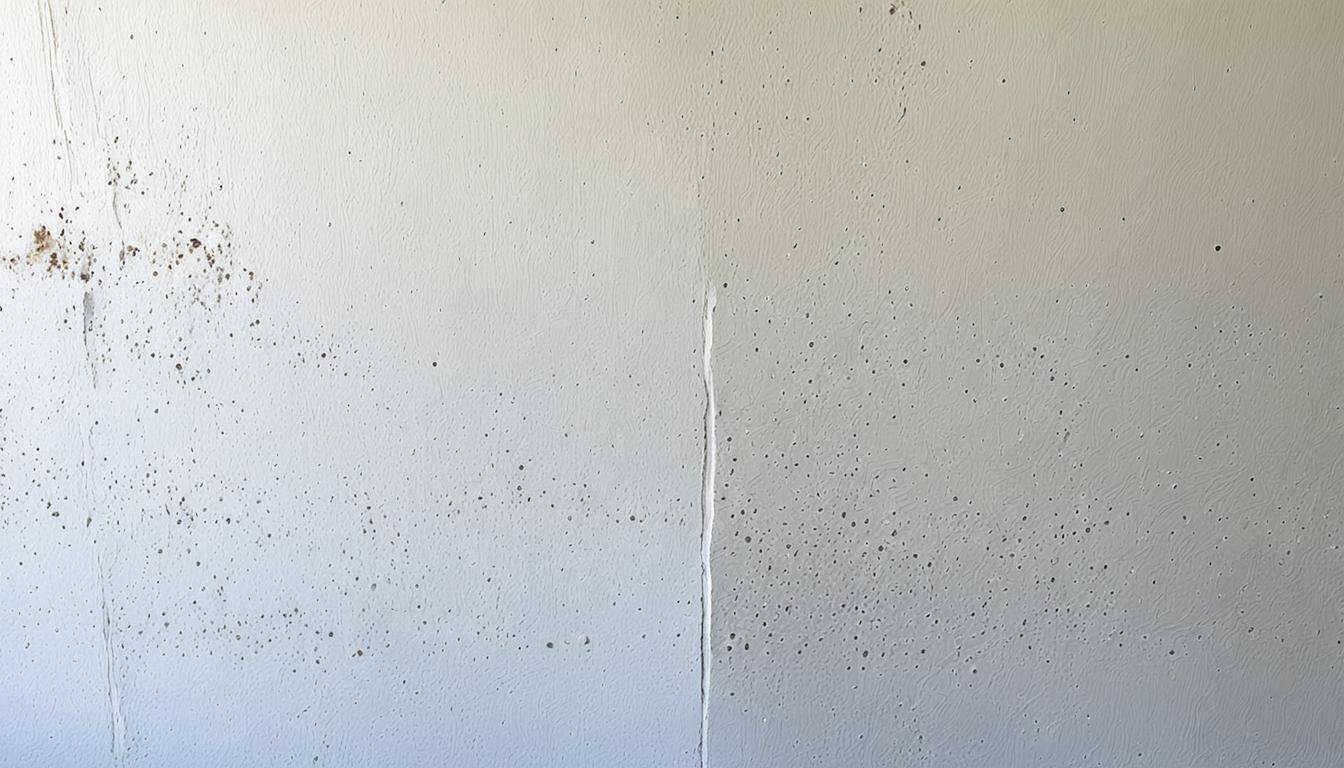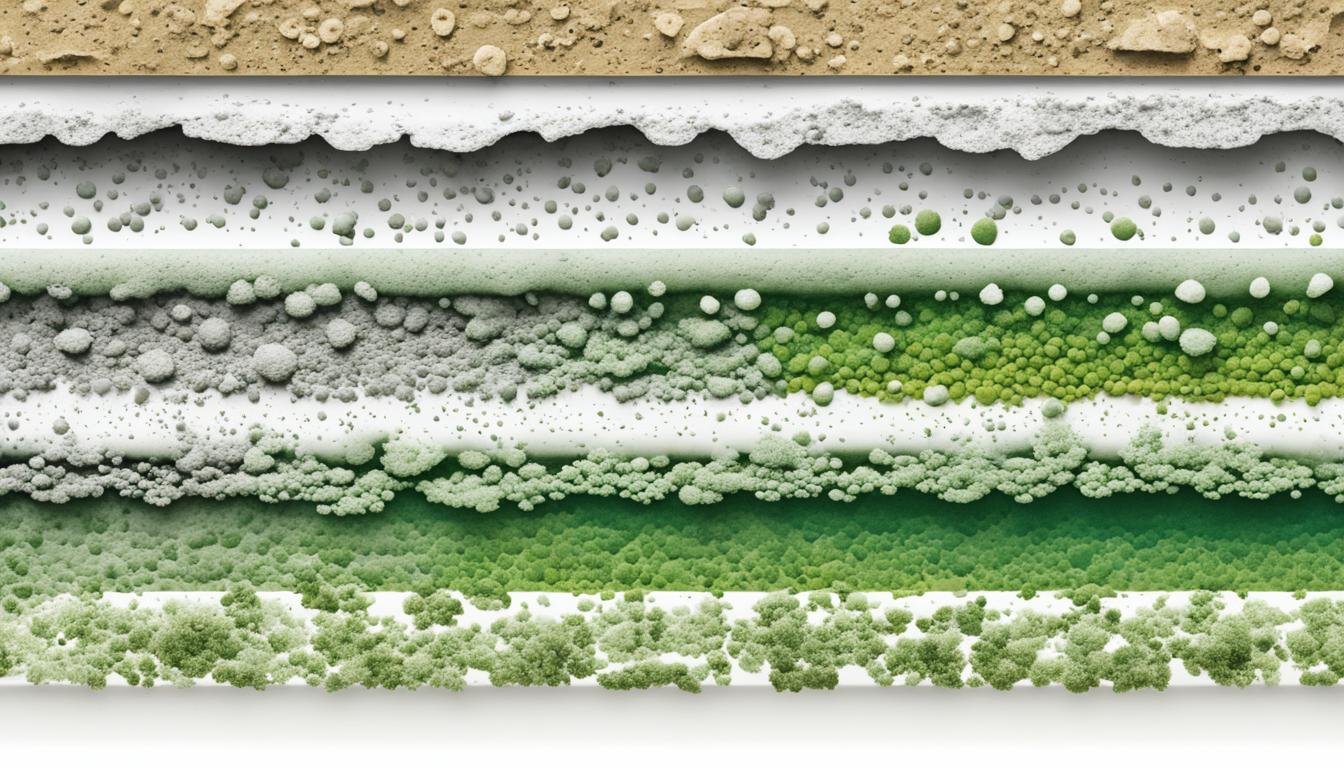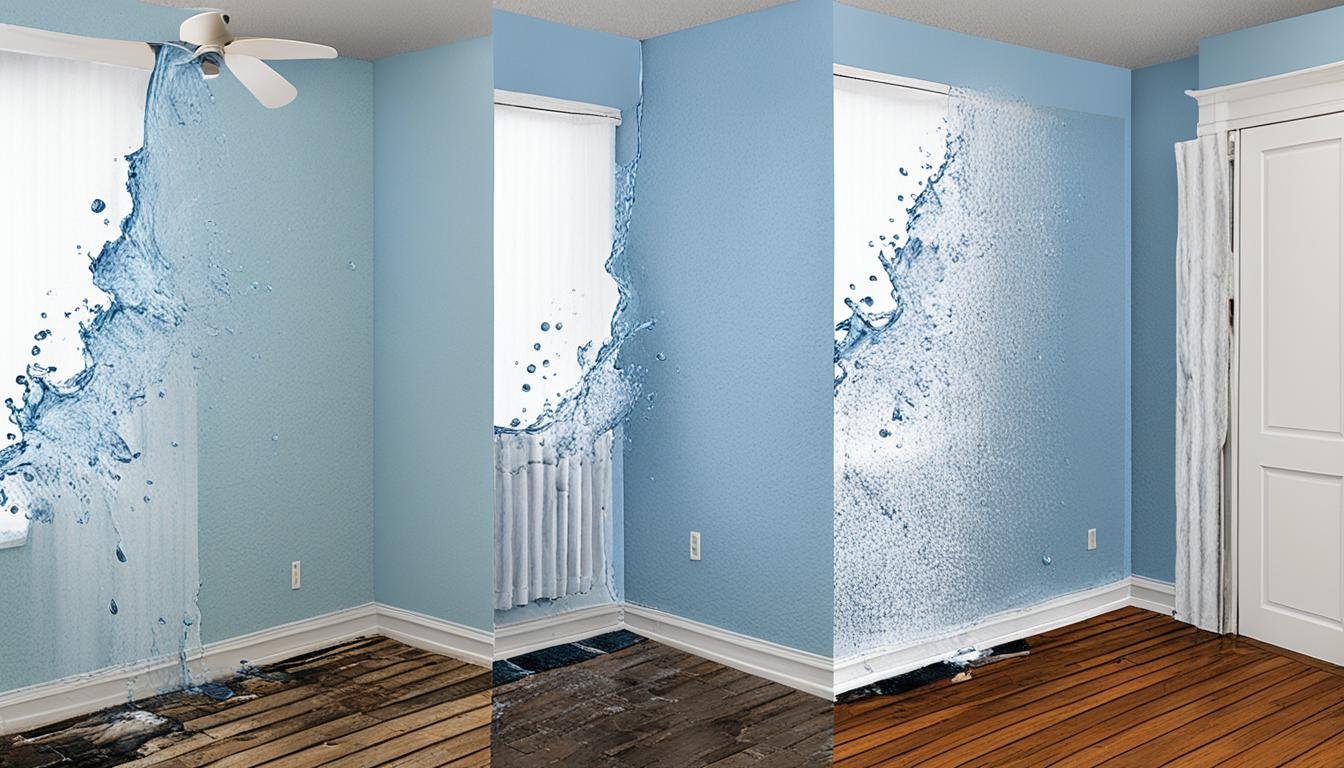Eliminating Mold After Water Damage
Mold can start growing in only 24 to 48 hours after your home gets wet. This rapid growth can hurt your home’s value and your health. By ignoring mold, you make big repairs and health problems more likely. It’s important to act fast against mold to keep your home safe and healthy. Key Takeaways Mold thrives in damp, unventilated spaces and can proliferate rapidly after water damage. Prompt action is essential to prevent further damage and potential mold growth. Professional mold remediation services may be necessary for areas over 10 square feet. Wear protective gear when cleaning up flood damage and debris to avoid mold exposure. Implement measures to prevent water damage, such as shutting off the main water valve and using no-burst hoses. Understanding Mold Growth and Its Dangers What Is Mold and How Does It Grow? Mold and mildew are fungi that love wet, humid places. They are tiny and spread by spores floating in the air. These spores start new colonies when they land in a damp spot. Water damage makes a perfect home for mold. It needs moisture to live. If an area stays wet for a day or two, mold starts to grow. This is why it often shows up after leaks or floods. Mold loves damp spots like bathrooms, kitchens, and basements. If a place is not completely dried after getting wet, mold can easily take over. Health Risks of Mold Exposure Being around mold can make you sick. The problems it causes can be from simple allergies to serious lung issues. Some molds can even be deadly with long-term exposure. Certain molds are bad news for people with asthma. They can cause fevers and make it hard to breathe. To stay healthy, we need to keep mold levels low indoors. Getting rid of mold means drying up any wet areas fast. Stop leaks and dry things out to stop mold before it starts. This is especially important just after a leak. Eliminating Mold After Water Damage Immediate Steps to Prevent Mold Growth When you’re facing water damage, acting fast is crucial. Quick water removal and drying are key to stop mold. Dehumidifiers and fans help dry things faster. Keeping the air dry makes it hard for mold to start growing. It’s also important to keep the area well-ventilated. This helps get rid of extra moisture and stops mold from spreading. Detecting and Addressing Existing Mold After water damage, watch out for mold. Signs of mold include stains, bad smells, and slimy, dark patches. Professional testing can confirm if there’s mold, especially in hidden spots. If you find mold, fix any leaks and clean it up properly. Professional Mold Remediation Services Dealing with mold might need expert help, especially with dangerous types. Pros can clean it up safely to prevent it from coming back. Home insurance might cover mold removal, but check your policy. Make sure to keep good records if you file a claim. If you act fast, use the right steps, and get help when needed, getting rid of mold is possible. You can keep your home safe and healthy. “Mold growth has been linked to health issues like breathing problems, pneumonia, headaches, and asthma attacks.” Babies, old people, and those with health issues are more at risk from mold. The EPA recommends pros for big mold problems or after a flood. Sometimes, mold cleanup and fixing water damage can be expensive. But, insurance might help with some of the costs. Conclusion Getting rid of mold and mildew after water damage is urgent. The key is to act fast. Address the issue as soon as you can. This helps stop more damage and health risks. Fixing water damage is more than just repairing things. It’s about keeping your home safe and healthy. Working with experts helps a lot. They guide you through keeping your home free from mold. Acting fast and consulting with professionals are important steps. They help to ensure mold doesn’t grow. This keeps your family safe. Early steps make a big difference when dealing with mold. Eliminating mold is crucial for your home and family’s safety. It helps keep your home’s structure strong too. With the right care and experts, your house can be mold-free. You’ll have a healthier place to live. FAQ What is mold and how does it grow? Mold and mildew are types of fungi. They love damp and humid places. These small organisms make spores that float in the air. When these spores land in the right spot, they start new colonies. Water from leaks or floods makes the perfect spot for mold to grow because they need moisture. What are the health risks associated with mold and mildew exposure? Being around mold and mildew can cause health issues. You might start sneezing, get a rash, or have watery eyes. But it can get worse. Breathing in certain molds for a long time can lead to serious health problems. This includes trouble with the nervous system and, in extreme cases, death. What are the immediate steps to prevent mold growth after water damage? To stop mold after water damage, act fast. Remove the water and dry the area quickly. Use dehumidifiers and fans to help. Keep the area’s humidity low. Also, make sure it’s well-ventilated. Use materials that resist mold when you fix up the space. This can stop mold from coming back. How can I detect and address existing mold? It’s vital to find and remove mold after water damage. Look for signs like stains, a musty smell, or slimy, dark patches. Testing by professionals can confirm if mold is hiding. If you find mold, first stop the moisture source. Then, clean and remove the mold properly. When should I seek professional mold remediation services? Tackling mold, especially black mold, is best left to experts. They can deal with big mold problems safely. Plus, your home insurance might help cover the cost. Make sure you understand your policy. Keep notes and photos if …



